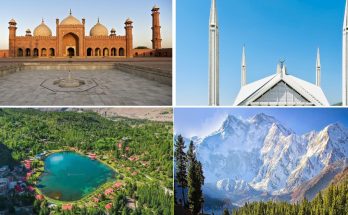The Beauty of Hunza Valley, Nestled in the northern part of Pakistan, Hunza Valley, located in the Gilgit-Baltistan region, is one of the most enchanting and picturesque destinations in the world. Known for its towering mountains, lush greenery, serene rivers, and vibrant culture, Hunza has become a favorite among tourists, trekkers, and nature lovers. Whether you’re an adventure enthusiast, a photographer, or someone simply looking for a peaceful retreat, Hunza offers an unforgettable experience. This article will provide a comprehensive guide to Hunza Valley, including its history, attractions, culture, best time to visit, and travel tips.
1. Introduction to Hunza Valley
Hunza Valley is located in the Gilgit-Baltistan region of Pakistan, which is situated in the far north of the country. The valley is part of the Karakoram Range, one of the highest mountain ranges in the world. The region is famous for its natural beauty, including snow-capped peaks, crystal-clear lakes, and verdant orchards. It is also home to a rich cultural heritage, with the Hunza people living in relative isolation for centuries, preserving their distinct traditions and customs.
The valley is often referred to as “Paradise on Earth” because of its breathtaking landscapes and tranquil ambiance. Over the years, it has attracted travelers from all corners of the globe who come to experience its unique blend of natural beauty, cultural richness, and adventure.
2. History of Hunza Valley
The history of Hunza Valley is both fascinating and mysterious. The Hunza people are believed to be of Aryan descent, with some historians speculating that they may have originated from the lost civilizations of Central Asia. For centuries, Hunza remained a self-governing kingdom ruled by a Mir (prince), who acted as both a political and spiritual leader.
The valley’s isolation helped preserve its unique culture, language, and customs. The region was relatively unknown to the outside world until the British expedition to the area in the 19th century, which led to the construction of the Karakoram Highway, the gateway to Hunza and other parts of Gilgit-Baltistan.
Despite modernization, Hunza has retained much of its old-world charm, and its people continue to live in harmony with nature while embracing technological advancements. The people of Hunza are known for their hospitality, warmth, and commitment to sustainable living.
3. Geography and Location of Hunza Valley
Hunza Valley is situated at an altitude of about 2,500 meters (8,200 feet) above sea level. It is surrounded by some of the highest peaks in the Karakoram Range, including Rakaposhi (7,788 meters) and Ultar Sar (7,388 meters). The valley is located about 100 kilometers from the regional capital of Gilgit, which is accessible by the famous Karakoram Highway.
The valley is divided into several regions, with the most prominent being the Upper Hunza, Central Hunza, and Lower Hunza. Each of these regions has its own unique characteristics and attractions, making Hunza a diverse and multifaceted destination.
4. Top Tourist Attractions in Hunza Valley
4.1. Karimabad
Karimabad, the main town of Hunza, is the heart of the valley and a popular base for travelers. It is home to several notable historical sites, including:
- Baltit Fort: This ancient fort, built over 700 years ago, is a symbol of Hunza’s royal history. The fort’s unique architecture and panoramic views of the surrounding mountains make it a must-visit attraction.
- Altit Fort: Another historical fort in Karimabad, Altit Fort offers a glimpse into Hunza’s past. The fort was once the residence of the Mir of Hunza and has been beautifully restored to preserve its historical significance.
- Hunza Bazaar: The vibrant local market in Karimabad is a great place to shop for traditional handicrafts, textiles, and fresh fruits, including Hunza’s famous apricots.
4.2. Eagle’s Nest
Eagle’s Nest is one of the most famous viewpoints in Hunza Valley. Located at an altitude of 4,000 meters (13,123 feet), it offers a panoramic view of several towering peaks, including Rakaposhi, Ultar Sar, and Ladyfinger Peak. The spot is particularly popular for sunrise and sunset photography, as the golden hues cast a magical glow on the surrounding mountains.
4.3. Rakaposhi Viewpoint
Rakaposhi, the 27th highest mountain in the world, dominates the skyline of Hunza Valley. The Rakaposhi Viewpoint, located on the Karakoram Highway, offers breathtaking views of this majestic peak. The viewpoint is a favorite stop for travelers en route to Hunza, offering opportunities for trekking, camping, and photography.
4.4. Attabad Lake
Attabad Lake was formed in 2010 after a massive landslide blocked the Hunza River. The lake, with its vibrant turquoise waters, has since become one of Hunza’s most visited attractions. It is a perfect spot for boating, kayaking, and photography, with the surrounding mountains creating a stunning backdrop.
4.5. Khunjerab Pass
Located at an elevation of 4,714 meters (15,466 feet), Khunjerab Pass is the highest point on the Karakoram Highway and marks the border between Pakistan and China. The pass is known for its stark beauty and is a popular stop for travelers heading to Hunza.
4.6. Hopper Valley
Hopper Valley is another scenic region in Hunza, known for its dramatic landscapes and the towering mountains surrounding it. The valley is ideal for trekking and exploring remote villages, where travelers can immerse themselves in the local culture.
4.7. Husseini Suspension Bridge
The Husseini Suspension Bridge, often regarded as one of the most dangerous bridges in the world, offers an adrenaline-pumping experience for brave travelers. The bridge connects the villages of Husseini and Borit and provides a unique perspective of the rugged terrain of Hunza.
5. Best Time to Visit Hunza Valley
The best time to visit Hunza Valley depends on the type of experience you’re looking for.
- Spring (March to May): Spring is a fantastic time to visit Hunza as the valley comes alive with blooming cherry blossoms, apricot trees, and lush greenery. The weather is mild, making it perfect for sightseeing and outdoor activities.
- Summer (June to August): Summer is peak tourist season in Hunza, with pleasant temperatures and clear skies. This is the best time for trekking, exploring the valley, and enjoying the local festivals, such as the Hunza Festival.
- Autumn (September to November): Autumn in Hunza is a photographer’s dream, with the valley’s landscapes painted in vibrant shades of red, yellow, and orange as the leaves of the trees change color. The weather is still mild, making it a great time for hiking and outdoor adventures.
- Winter (December to February): Winter in Hunza is cold and snowy, but it offers a unique experience for those who enjoy winter sports or simply want to experience the serene beauty of a snow-covered landscape. However, some areas may be inaccessible due to snow and road closures.
6. Culture and People of Hunza
The people of Hunza are known for their friendliness, hospitality, and strong sense of community. The majority of the population speaks Burushaski, though many people also speak Urdu, English, and Shina. The Hunza people practice Ismaili Islam, and their religious and cultural practices are deeply rooted in their history.
One of the most fascinating aspects of Hunza’s culture is the longevity of its people. There is a popular belief that the residents of Hunza live long, healthy lives, with some claiming that many individuals in the valley live to be over 100 years old. While this may be an exaggeration, it is widely acknowledged that the Hunza people maintain a healthy lifestyle, with a diet rich in fresh fruits, vegetables, and whole grains.
The valley is also known for its traditional festivals, which celebrate the harvest season, religious events, and cultural practices. These festivals are an opportunity for locals to showcase their music, dance, and handicrafts, providing a rich cultural experience for visitors.
7. Adventure Activities in Hunza Valley
Hunza is a paradise for adventure lovers, offering a range of activities that allow you to explore the valley’s rugged terrain and pristine landscapes. Some of the most popular adventure activities in Hunza include:
- Trekking and Hiking: Hunza is a trekking mecca, with several trekking routes that cater to different skill levels. Popular treks include the Rakaposhi Base Camp trek, Ultar Sar trek, and the trek to the Husseini Suspension Bridge.
- Climbing and Mountaineering: For experienced climbers, Hunza offers several challenging peaks, including Rakaposhi and Ultar Sar. The valley is part of the Karakoram Range, which is known for its world-class climbing opportunities.
- Camping: Camping in Hunza is a memorable experience, with several picturesque spots where you can set up camp and enjoy the serenity of the mountains.
- Jeep Tours: A jeep tour through the rugged terrain of Hunza is a thrilling way to explore the valley. The drive along the Karakoram Highway is one of the most scenic in the world, offering spectacular views of the surrounding mountains and valleys.
- Boating and Kayaking: Attabad Lake and other bodies of water in the valley offer opportunities for boating and kayaking, providing a unique way to explore Hunza’s natural beauty.
8. How to Reach Hunza Valley
Hunza Valley is accessible via the Karakoram Highway, which connects the region to the rest of Pakistan. The nearest major city is Gilgit, which is approximately a 2-3 hour drive from Hunza. Gilgit is well-connected to Islamabad and other major cities by road and air.
Visitors can also reach Hunza via private vehicles or buses, with the journey offering spectacular views of the surrounding mountains and valleys. For those flying into Gilgit, there are regular flights from Islamabad and other major cities.
9. Where to Stay in Hunza Valley
Hunza offers a range of accommodation options, from budget guesthouses to luxurious hotels. Some popular places to stay in Hunza include:
- Hunza Serena Inn (Karimabad): A luxury hotel offering stunning views of Rakaposhi and Ultar Sar. It has comfortable rooms, a restaurant, and excellent facilities for travelers.
- Baltit Fort Inn (Karimabad): This charming guesthouse is located near Baltit Fort and offers a unique stay with traditional Hunza-style rooms and modern amenities.
- Eagle’s Nest Resort (Eagle’s Nest): For those looking to experience Hunza’s natural beauty up close, Eagle’s Nest Resort offers a serene and peaceful environment with stunning mountain views.
- Guesthouses and Homestays: For a more authentic experience, you can stay with local families in guesthouses or homestays, where you can enjoy traditional Hunza hospitality and learn about local culture.
10. Conclusion
Hunza Valley is undoubtedly one of the most beautiful and unique destinations in the world. Whether you’re drawn to its breathtaking landscapes, fascinating history, or vibrant culture, Hunza offers something for every type of traveler. From the towering peaks of Rakaposhi and Ultar Sar to the serene waters of Attabad Lake, Hunza’s natural beauty is unparalleled.
Whether you’re planning a short visit or an extended adventure, Hunza Valley promises an unforgettable experience. So, pack your bags, book your trip, and get ready to explore this magnificent paradise in the heart of Gilgit-Baltistan.



